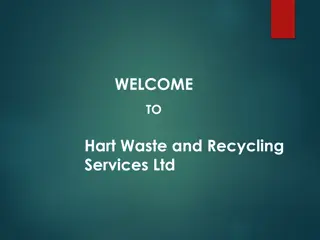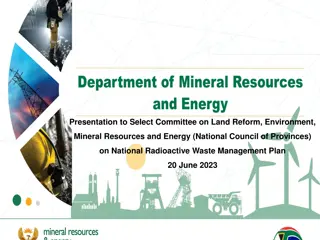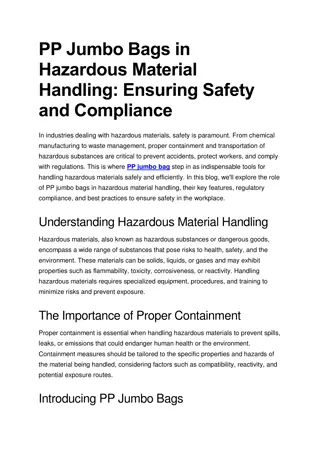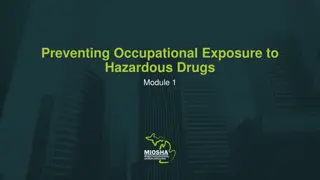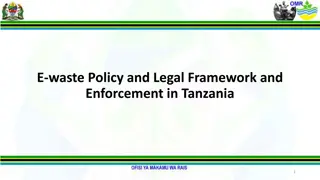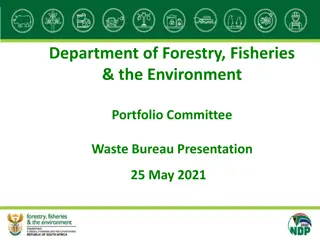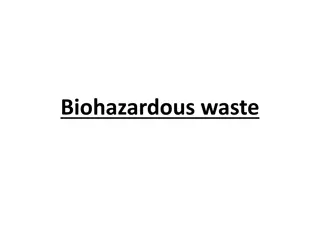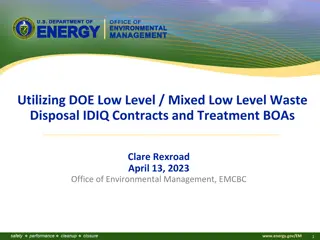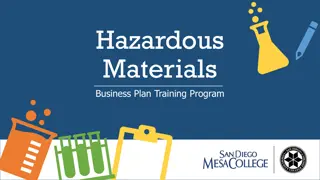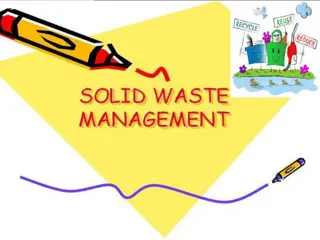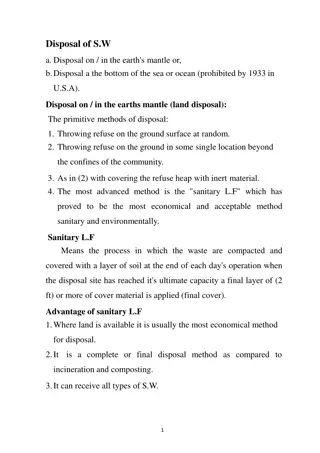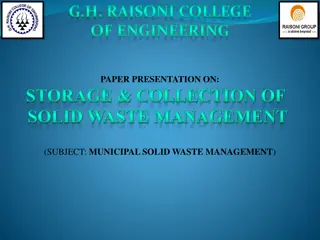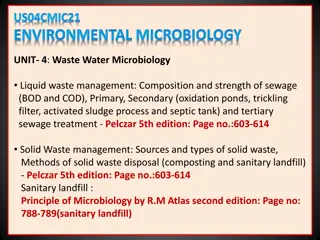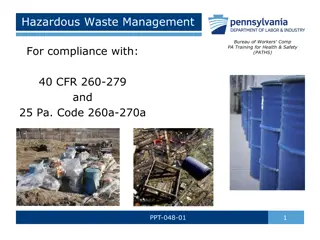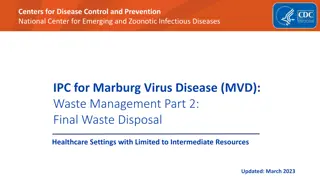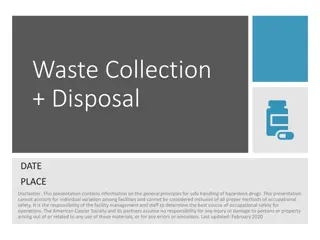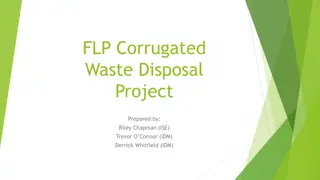
Hazardous Waste Disposal in Environmental Health and Safety Office
This presentation covers hazardous waste disposal practices, including what constitutes waste, organizing lab waste, storing lab waste, handling potentially unstable chemicals, dealing with unknown chemicals, disposal forms, and contact information for waste management at the University of Manitoba. It provides valuable insights into the safe and proper management of hazardous waste in laboratory settings.
Download Presentation

Please find below an Image/Link to download the presentation.
The content on the website is provided AS IS for your information and personal use only. It may not be sold, licensed, or shared on other websites without obtaining consent from the author. If you encounter any issues during the download, it is possible that the publisher has removed the file from their server.
You are allowed to download the files provided on this website for personal or commercial use, subject to the condition that they are used lawfully. All files are the property of their respective owners.
The content on the website is provided AS IS for your information and personal use only. It may not be sold, licensed, or shared on other websites without obtaining consent from the author.
E N D
Presentation Transcript
Hazardous Waste Disposal Environmental Health and Safety Office
2 Hazardous Waste Program U of M Specific Free of charge Cradle to grave approach Generation Collection Disposal Laboratory packing
3 What Constitutes as Waste? Chemicals Solvents (non-halo organic, halo organic) Solid reagents (organic, inorganic) Solutions (organic, inorganic, acids, bases) Oil (pump, oil baths) Mercury Contaminated materials Spill clean-up waste Pipette tips
4 Organizing Lab Waste Original packaging Like goes with like Halo, non-halo, aqueous etc. Hazardous waste disposal label Inorganic, organic Packaging Containers Size, durability, seal Hazardous waste disposal label
5 Storing Lab Waste Properly labeled Unconsumed chemicals Appropriate cabinet Ventilation Non-storage areas Fumehoods Bench top Floor
6 Potentially Unstable Chemicals Dried picric acid Shock and friction Peroxides Concentration Ethyl ether, dioxane, THF, isopropyl ether, vinylidene chloride, cyclohexene Exothermic polymerization Styrene, acrylic acid, acrylonitrile, butadiene, methyl methacrylate, vinyl chloride
7 Unknown Chemicals Lab reagents Missing label Molecular characterization Transferred from stock bottle Reaction by-products Reagent information Inorganic vs. organic Reaction conditions Approximate contents
8 Disposal Form Waste generator Location for pick-up Size of container not quantity of waste Chemical specific Everything in the container No generic names No abbreviations Connects directly to e-mail
9 Questions Website http://umanitoba.ca/admin/vp_admin/risk_management/ehso/ Hazardous Waste Management Phone 204-474-6633 E-mail hazwaste@umanitoba.ca

